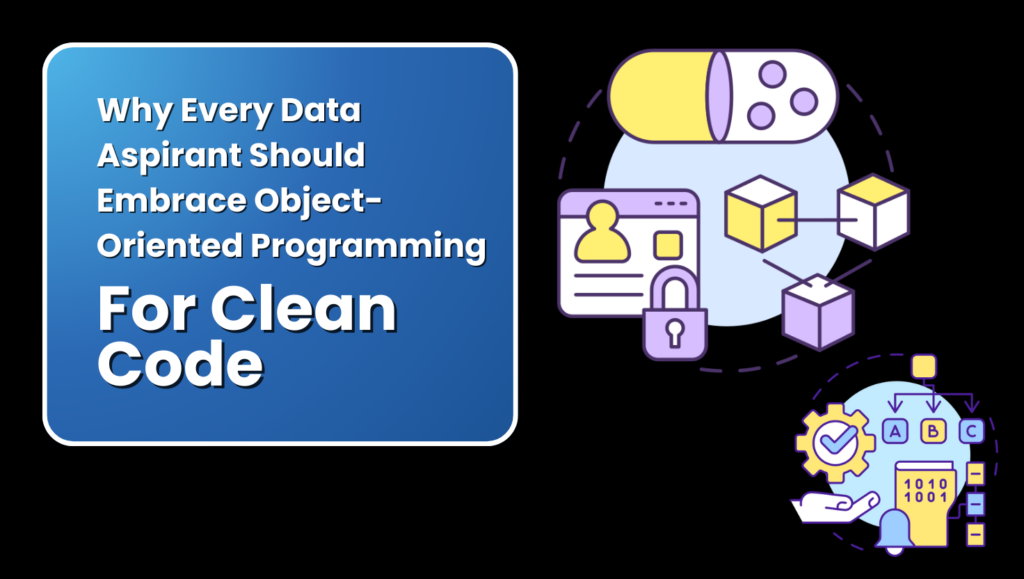Let’s be honest—messy code is a nightmare. You start off with a simple script, and before you know it, it turns into a tangled web of if-else statements and redundant functions. Sounds familiar? Don’t worry, we’ve all been there.
But what if I told you that Object-Oriented Programming (OOP) could be your secret weapon for writing clean, scalable, and reusable code? Whether you’re working on data pipelines, machine learning models, or automating ETL tasks, OOP can make your life significantly easier. Let’s break it down.
1. Reusability: Stop Repeating Yourself (DRY Principle)
Ever written the same function multiple times across different scripts? That’s a red flag. OOP promotes reusability through classes and objects. Instead of writing multiple functions for similar tasks, you can create a class once and use it whenever needed.
Imagine you’re working with customer data across multiple projects. Instead of writing separate functions for handling data cleaning, validation, and transformations, you can create a CustomerData class:
class CustomerData:
def __init__(self, data):
self.data = data
def clean(self):
# Perform data cleaning
pass
def validate(self):
# Perform data validation
pass
Now, every time you need to clean or validate data, you just create an instance of this class. No need to reinvent the wheel!
2. Encapsulation: Protect Your Data (and Your Sanity)
Encapsulation ensures that sensitive data is hidden and only accessible through predefined methods. This prevents accidental modifications and keeps your codebase manageable.
For example, let’s say you have a dataset that shouldn’t be modified directly. You can enforce this using private variables:
class SecureData:
def __init__(self, data):
self.__data = data # Private variable
def get_data(self):
return self.__data # Controlled access
Now, anyone using this class won’t be able to modify __data directly, reducing the risk of unintended errors.
3. Inheritance: Build on What You Already Have
Inheritance allows you to create a base class and extend its functionality, instead of duplicating code. Let’s say you have different types of datasets (customer data, sales data, product data) that share some common functionalities. Instead of writing separate logic for each, you can create a parent class:
class Dataset:
def load(self):
print("Loading data...")
class CustomerDataset(Dataset):
def clean(self):
print("Cleaning customer data...")
Now, CustomerDataset inherits the load() function from Dataset, reducing redundancy and keeping your code clean.
4. Polymorphism: One Function, Multiple Uses
Polymorphism allows different objects to use the same method name but implement it differently. This is especially useful in data science when handling different data formats.
class JSONData:
def read(self):
print("Reading JSON file")
class CSVData:
def read(self):
print("Reading CSV file")
Now, both JSONData and CSVData have a read() method, but their implementations vary based on the data format. This keeps your code flexible and adaptable.
Final Thoughts
For data aspirants, learning OOP isn’t just about writing cleaner code—it’s about writing smarter code. Whether you’re building ETL pipelines, automating data cleaning, or developing predictive models, OOP helps you write modular, reusable, and maintainable code that scales effortlessly.
So, the next time you’re struggling with a messy script, ask yourself: Would a class make this cleaner? Chances are, the answer is yes.
What’s your experience with OOP in data projects? Drop your thoughts in the comments!
